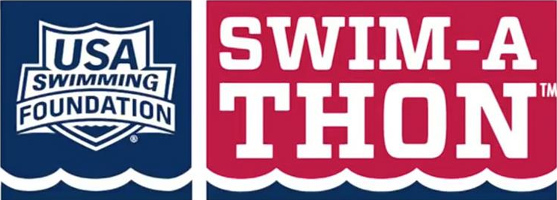
College Swimming 101:
The process of choosing a college is, by itself, a very trying experience. To add looking for a good-fit swim program to this process takes energy, time and a positive attitude. It is best to be prepared before you begin this journey and to do some research. Below are some frequently asked questions, and some resource links that has been compiled to help you in this process.
If you have not started your college search be sure to get started so you can plan your visits for the upcoming academic year. Also if you are considering Division I or Division II schools be sure to begin the NCAA Clearinghouse process at https://web3.ncaa.org/ecwr3/.
The first thing every athlete should know is that they should try to get the most non-athletic scholarship money as possible. This money can last for the entire four years. Athletic scholarship money is only good for one year at a time and is not available at any Division 3 colleges or universities. The most important thing is grades, as they will give you the best chance at receiving academic scholarship/grant money.
Below is a list of items each swimmer should accomplish during the recruitment process:
• Review all NCAA Athletic eligibilty rules.
• Take the PSAT's and SAT'S.
• Create a swimming/scholastic resume.
• Examine NCAA Clearinghouse eligibility rules and study the class and grade reqiurement standards.
• Learn what Junior and Senior year courses you will need in order to complete the NCAA Clearinghouse requirements.
• Develop a list of schools you are interested in and study them.
• Participate in as many Championship type meets as opposed to regular meets so you can be evaluated and identified.
• Stay focused on improving your grades.
• Send profile and information to coaches of schools you are interested in.
• Make unofficial and official visits to to colleges you are interested in.
What Do I Need To Do?
Grade 9:
► Verify with your high school guidance counselor and the online core-course listing to make sure you are on track
Grade 10:
► Verify with your high school guidance counselor and the online core-course listing to make sure you are on track.
Grade 11:
► Register with the eligibility center.
► Make sure you are still on course to meet core-course requirements (verify you have the correct number of core courses and that the core courses are on your high school's 48-H with the eligibility center).
► After your junior year, have your high school guidance counselor send a copy of your transcript. If you have attended any other high schools, make sure a transcript is sent to the eligibility center from each high school.
► When taking the ACT or SAT, request test scores to be sent to the eligibility center (the code is "9999").
► Begin your amateurism questionnaire.
Grade 12:
► When taking the ACT or SAT, request test scores to be sent to the eligibility center (the code is "9999").
► Complete amateurism questionnaire and sign the final authorization signature online on or after April 1 if you are expecting to enroll in college in the fall semester. (If you are expecting to enroll for spring semester, sign the final authorization signature on or after October 1 of the year prior to enrollment.)
► Have your high school guidance counselor send a final transcript with proof of graduation to the eligibility center.
FAQ:
Q. When do I start my search?
The beginning of your Junior year is the best time to start. This is the last year you will have to better your times to show coaches. You will need to take your SATs and/or ACTs so you have scores available to pass along to coaches. You will need to speak to your guidance counselor to find out when your GPA and class rank will be available. Also, you should speak to your coach and see if he has any suggestions as to colleges you might want to look into.
NOTE: Be sure to take your SAT's at least once during your Junior year because college coaches will want and need this information.
If there is one school that interests you, do your research. Check out their website, ask around to other swimmers if they have had any experiences with this school and swim program. Remember, you need to choose the school, not the swim program.
Q. Are there websites available to help me find a college that fits me?
There are many websites that allow you to sort colleges by specific criteria such as majors, sports, etc. A couple of these are www.collegeboard.com where you can also register for your SATs and ACTs, www.princetonreview.com and www.petersons.com. Most of these sites also contain suggested timelines for the college selection process. A college swimming site that is helpful is: www.collegeswimming.com
Q. What is the difference between Division I, Division II and Division III?
Both Division I and Division II schools may offer athletic money and have specific academic and SAT requirements. You can find these requirements www.ncaa.org. Divison III does not offer athletic monies and has no specific academic and SAT requirements, except of course, depending on what each individual school requires. For the official NCAA explanation of the difference between divisions go to http://www.ncaa.org/wps/ncaa?ContentID=418.
Q. I am interested in a Division I or II school, anything else I should know?
There are many rules and regulations involved with these two divisions. First, be sure to go to www.ncaa.org as this website can answer most, if not all, of your questions about many things. Second, you must register at https://web3.ncaa.org/ecwr3/ to receive a Certificate of Amateur Status should you end up visiting or attending a school in either of these divisions. The process is begun in your Junior year and will be completed upon their processing of your final transcript after graduation from high school. Before you can go on to an official visit to a school in either division, you must begin this process.
Q. Will college coaches contact me?
Maybe. You may receive letters from Division III colleges at any point and from Division I and II colleges during your Junior year. Coaches cannot speak to you in person or by telephone until July 1st between your Junior and Senior years.
Q. Can I contact a coach?
Absolutely! Do not hesitate to send the coach an e-mail with all of your best times listed. You never know what a coach is looking for. If you have a strong academic background be sure to include this as well. Whatever you think may catch the coach’s attention. If you do not hear back from the coach of a school you are interested in you should mail him a letter so you are sure your e-mail did not get passed over. Most college athletic sites have a Recruiting Questionnaire on them, print it out, complete it and send it with your letter. If you do not hear from them still, speak to your club coach and see if he will make a follow-up call on your behalf.
Q. When should I start visiting colleges?
A good time to start is in the spring of your Junior year. NCAA Championships have concluded and coaches can now start to look towards the next year’s recruits. If you are planning on making a visit let the coach know. While he cannot talk to you he can talk to your parents, arrange a tour and maybe have you meet some team members. If at all possible visit a school while it is in session as this will allow you to get a feel for the campus.
Q. What is the difference between an "unofficial" and "official" visit?
A simple explanation is that an unofficial visit is not paid for by the college and you can make unlimited numbers of these to any school regardless of what division and an official visit is one paid for by the school. For Division I and II you are limited to five official visits in total. For all three divisions you may only may only make one official visit per school. More specific information may be found at www.ncaa.org.
Q. Am I fast enough to swim in college?
There are a lot of colleges out there and coaches need to fill a lot of lanes. If you are interested in a school contact the coach with your best times, academic background and any other information you that might help before you visit the school and see if he will meet with you.
Q. What does "early decision: and "early action" mean?
Here is a link that explains each and the differences between them along with a proposed timeline should you choose to go either way - http://www.collegeboard.com/parents/apply/college-applications/21342.html . Not all schools offer either or both options so be sure to check the college’s website.
Q. When do I have to make my final decision?
If you plan on attending a Division I or Division II school and are being offered athletic aid you must sign a National Letter of Intent. There are two signing periods during your Senior year in November and April. The exact dates can be found at www.ncaa.org. If you are going Division III or are not going to receive athletic aid then your college of choice must receive your deposit by May 1st of your Senior year.
Credit to: NJ Swimming LSC for researching and posting many of these FAQ for the swimming community - Thanks.
Resources:
- NCAA Guide for the College-Bound Student-Athlete
- NCAA Eligibility Center Quick Reference Guide
- NCAA Eligibility Center Registration Checklist
- NCAA 2 Year Transfer Guide
- NCAA 4 Year Transfer Guide
- NCAA Initial Eligibility DI and DII Worksheet
- What Do College Coaches Look For?
- Common Myths About College Recruiting
- NCAA Eligibility Center
- Be Recruited.com
 |
• PO Box 866 Stafford, VA 22555-0866 • (540) 207-0846 |





